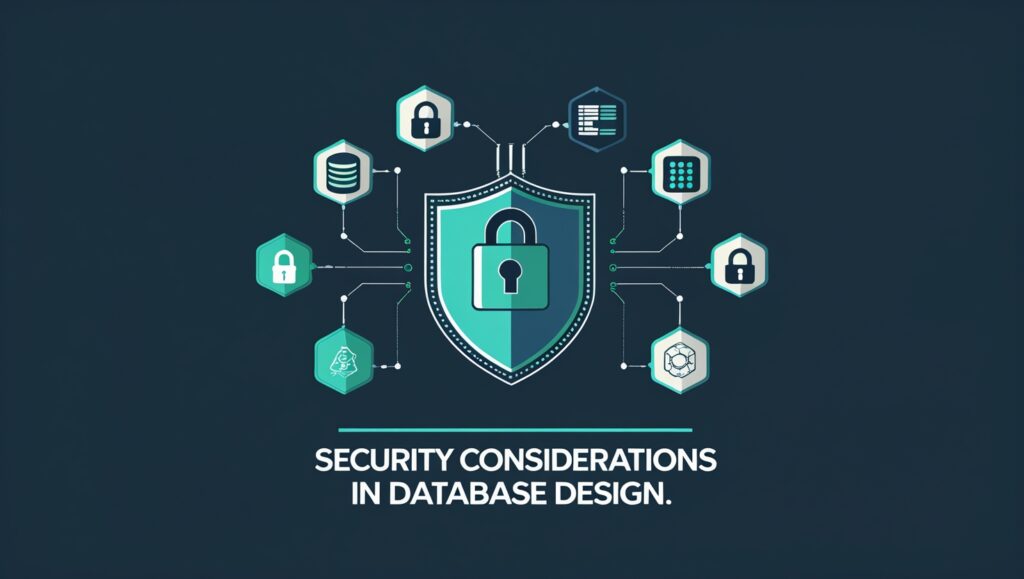Database Design Principles Every Developer Must Master in 2025
As applications grow in complexity and data continues to be the backbone of digital experiences, database design principles has never been more critical. In 2025, apps aren’t just storing user profiles—they’re managing real-time analytics, AI-driven insights, edge computing, and hybrid cloud operations. No matter how smart your AI or scalable your cloud platform is, if your database design is flawed, performance will suffer, scalability will hit limits, and data integrity will eventually crumble.
Modern development stacks may abstract away a lot of the complexity, but they still rely on a solid foundation. A well-designed database ensures that developers don’t spend half their time fixing bugs that could have been avoided with better schema planning.
Evolution of Database Design Principles From Flat Files to Cloud-Based Systems
Originally, data was stored in flat files—simple, text-based systems with no structure or relationships. Think spreadsheets without formulas or data types. Then came hierarchical and network models, which improved organization but lacked flexibility.
The breakthrough came with relational databases (like Oracle, MySQL, and PostgreSQL), introducing the concept of tables, rows, columns, and constraints. Fast-forward to today, and we now have multi-model databases like ArangoDB, cloud-native distributed systems like Google Spanner, and even serverless databases like Aurora Serverless. With microservices, global apps, and big data, choosing the right model and designing around its strengths is essential.
Foundational Concepts Every Developer Must Know
What Is a Database Schema?
A schema defines the structure of your database. It includes:
- Tables
- Columns and their data types
- Indexes
- Keys (primary and foreign)
- Views and stored procedures
Without a schema, your data is just noise. With it, data becomes a clear, organized, and accessible resource.
Entities, Attributes, and Relationships
- Entity: A real-world object (e.g., a “Customer”)
- Attribute: A property of that object (e.g., “email” or “name”)
- Relationship: A logical link between two entities (e.g., “Customer places Orders”)
For instance, a “Customer” entity might have a one-to-many relationship with an “Order” entity, meaning each customer can place multiple orders.
Data Types and Their Impact on Performance
Each column has a data type, and choosing the right one matters. Storing numeric values as strings (e.g., “1000” instead of INT) leads to inefficient operations. Here’s why it matters:
- Memory and storage usage
- Indexing efficiency
- Query speed
For example, DECIMAL(10,2) is more suitable than FLOAT for monetary values due to precision handling.
Core Principles of Effective Database Design Principles
Principle of Normalization
Normalization organizes your tables to minimize redundancy and dependency issues. It improves:
- Data integrity
- Storage efficiency
- Maintenance
First to Fifth Normal Forms Explained Simply
- 1NF: Each field contains atomic (indivisible) data.
- 2NF: Removes subsets of data that apply to multiple rows of a table.
- 3NF: Removes columns that do not depend on the primary key.
- 4NF: Ensures multivalued facts are stored properly.
- 5NF: Resolves redundancy caused by join dependencies.
While 3NF is often sufficient, large enterprise databases may benefit from understanding 4NF and 5NF to prevent edge-case anomalies.
Denormalization: When and Why to Use It
In some scenarios, especially when read speed is paramount (like in dashboards), it makes sense to denormalize data:
- Combine multiple tables into one
- Store derived values (e.g., total_price)
However, denormalization increases data redundancy, so updates must be handled carefully to avoid inconsistencies.
Choosing the Right Primary Keys
- Natural Keys: Use actual data (e.g., email address)
- Surrogate Keys: Use artificial identifiers (e.g., AUTO_INCREMENT IDs or UUIDs)
Use surrogate keys if natural keys are subject to change or aren’t unique enough. For distributed systems, UUIDs are common, but they can bloat indexes and slow down performance.
Indexing Strategies for Speed and Efficiency
Indexes are internal data structures (typically B-Trees) that let the database search, sort, and filter records quickly—much like a book index. Instead of scanning millions of rows, the DB engine uses the index to go straight to the needed rows.
Types of Indexes
- B-Tree: Ideal for range queries and sorting.
- Hash: Perfect for equality lookups but not range queries.
- Full-Text: Best for searching keywords in large text blobs.
Knowing when and how to use each one can drastically improve performance.
Best Practices for Indexing in 2025
- Index columns frequently used in WHERE, JOIN, ORDER BY.
- Avoid indexing columns with high update/delete activity.
- Composite indexes should follow the order of query filters.
- Monitor with query execution plans (EXPLAIN, ANALYZE).
Designing for Scalability and Performance
Vertical vs. Horizontal Scaling
- Vertical Scaling (Scaling Up): Increase server specs (CPU, RAM).
- Horizontal Scaling (Scaling Out): Add more servers or nodes.
While vertical scaling is simpler, it has limits. Web design your database for horizontal scalability using sharding and replication techniques.
Partitioning and Sharding Basics
- Partitioning: Divides one large table into smaller parts within a single database.
- Sharding: Splits data across multiple databases or servers.
These strategies help handle large datasets efficiently by parallelizing reads and writes.
Handling High-Concurrency Environments
When thousands of users interact with your app simultaneously, you’ll need:
- Connection pooling
- Transaction isolation levels (READ COMMITTED, SERIALIZABLE)
- Optimistic/pessimistic locking
Caching frequently accessed data (with Redis or Memcached) also helps offload the DB.
Data Integrity and Constraints
Using Foreign Keys and Unique Constraints
These constraints enforce business rules:
- Foreign Key: Maintains referential integrity between tables.
- Unique Constraint: Prevents duplicate values in specified columns.
For instance, enforcing that every Order must be tied to an existing Customer via a customer_id foreign key.
Implementing Check Constraints and Triggers
- Check Constraint: Validates values (e.g., quantity > 0).
- Trigger: Executes logic in response to changes (e.g., automatically updates inventory after an order).
Use triggers carefully—they can add hidden complexity and slow down large data operations.


Security Considerations in Database Design
Most of all, security should be a priority just when designing a database. Database often stored critical sensitive information like personal details, financial records, and proprietary business data. Poor security will increase the vulnerability of data breaches, loss of trust, legal penalties, and significant financial losses. Therefore several key practices need to be implemented:
Role-Based Access Control: Permissions shall be assigned in accordance with the user role within an organization by RBAC. For example, there will be a database admin, who can access all data and controls, while a random user may read or write his/her own data. However, a minimum necessary level of access would be restricted so RBAC reduces accidental or malicious data exposure.
Encryption: Data should be encrypted both when it is stored (at rest) and when it is being transmitted across networks (in transit). Encryption scrambles the data so that even if someone unauthorized gains access, they cannot understand or use it without the decryption key. Common encryption standards include AES-256 for stored data and TLS (Transport Layer Security) for data moving over the internet. Additional protection can be achieved by encrypting sensitive columns like social security numbers or credit card details.
Password Protection Sternly; often the user identification is found in the databases, storing it directly within them is a great security risk. The passwords must be some venomous, slow hashing function for example bcrypt or Argon2. Hashing the password transforms it into a unique string that cannot easily be inverted, making it very hard for attackers to steal or misuse data passwords.
Audit Logging and Monitoring: Detailed logging of operations carried out on the database can help an organization catch suspicious activities early. If someone or something attempts to obtain or change some of the data in an unauthorized way, such actions can immediately be traced using logs.
Compliance and Legal Requirements: Data protection compliance requirements are applicable to many industries; for instance, the European region uses GDPR, and the health industry uses HIPAA. On the other hand, the payment card industry marks payment card related laws as PCI DSS. These laws require security measures in databases such as encrypted and controlled access to data as well as retention of data.
In summary, to secure a database is more to locking doors. It rather means controlling carefully who gets to see and/or change the data, protecting data from interception or theft, and ensuring sensitive things such as passwords are managed securely. It also means compliance with legal standards. Using all these security principles in early database design, that means there would be data assurance in terms of integrity, privacy, and trustworthiness, even in the present complex digital world.
Role-Based Access Control
RBAC enforces access based on user roles. Example:
- Admins: Full access
- Users: Read/write their own data
- Analysts: Read-only access
Avoid giving broad privileges to applications. Restrict permissions to just what they need.
Encryption Best Practices for Data at Rest and in Transit
- At Rest: Use AES-256 encryption.
- In Transit: Use TLS 1.2+ for all connections.
- Passwords: Hash with bcrypt, never store raw passwords.
Compliance (e.g., GDPR, HIPAA) may also mandate encryption and logging policies.
Working with NoSQL and NewSQL Databases
When to Choose NoSQL Over Relational Databases
Choose NoSQL if:
- Schema is highly dynamic.
- You need horizontal scaling from day one.
- You’re handling JSON documents, graphs, or key-value pairs.
Use relational databases for:
- Transactions
- Financial or inventory systems
- Structured data with defined relationships
Key Design Patterns for Document and Columnar Databases
- Document (MongoDB): Embed documents for performance; use references for shared data.
- Columnar (Cassandra): Model based on query paths. Design each table for specific queries.
NoSQL doesn’t mean no design—it just requires a different approach.
Cloud-Native Database Design Principles
Multi-Region Design Strategies
- Use geo-replication for low-latency reads.
- Employ eventual consistency where absolute consistency isn’t critical.
- Consider platforms like Google Spanner or Azure Cosmos DB for global apps.
Disaster Recovery and Backups
- Schedule regular automated backups.
- Use PITR (Point In Time Recovery) if available.
- Store backups in separate regions/clouds for resilience.
Tools and Technologies Developers Should Know
ERD Tools and Schema Designers
Use these for visualizing and planning:
- dbdiagram.io
- drawSQL
- Lucidchart
- MySQL Workbench
- pgModeler
SQL Generators and Linters
- SQLFluff: SQL syntax linting.
- Prisma: Type-safe schema definition and DB abstraction.
- Liquibase / Flyway: Schema versioning and migrations.
- DBT: Transformation workflows in data pipelines.
Mistakes to Avoid in Database Design Principles 2025
Overengineering the Schema
Trying to predict every future need can result in overly complex schemas. Start simple, iterate.
Ignoring the Business Logic Layer
Don’t cram everything into stored procedures. Distribute logic smartly between application and DB.
Forgetting About Maintenance
Plan for:
- Migrations
- Schema changes
- Backups
- Monitoring (use tools like DataDog, Prometheus)
Future Trends in Database Design Principles
AI and Machine Learning in Schema Optimization
AI is now analyzing usage patterns to:
- Suggest indexes
- Recommend schema changes
- Detect anti-patterns
Tools like OtterTune and AWS Performance Insights are leading this shift.
Serverless Databases and What They Mean for Developers
Serverless DBs like Aurora Serverless or PlanetScale auto-scale based on demand. They’re perfect for unpredictable workloads—but require careful design to avoid connection bloat and cold starts.


Conclusion
Mastering database design Principles in 2025 isn’t just about keeping up with trends—it’s about laying the foundation for performance, scalability, and security in every app you build. Whether you’re building a SaaS platform, a mobile app, or a global AI-driven system, understanding the principles outlined here will ensure your data works for you—not against you.
A good schema is invisible to the user, but its impact is massive. Build it right, and you create fast, reliable, and future-ready applications.
Author







